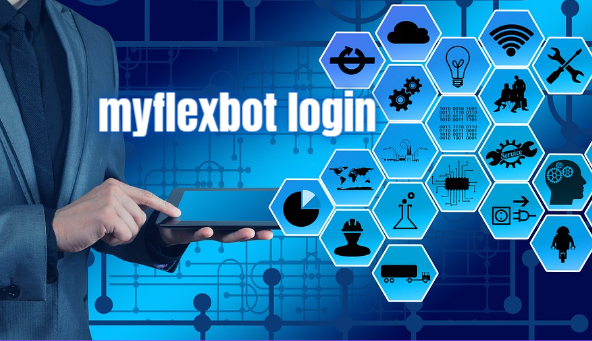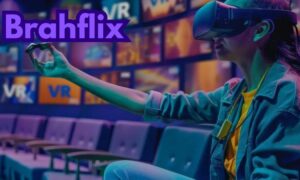
In the continuously evolving realm of education, technology emerges as a catalytic force, transforming teaching and knowledge acquisition methods. Its integration in classrooms goes beyond gadget use, revealing new dimensions of engagement, collaboration, and personalised learning. This exploration uncovers the vital reasons for technology’s essential role in education. From boosting student motivation to enabling instant assessment, each aspect fosters a vibrant learning environment. Join us to explore ten key reasons why technology acts as a transformative catalyst, propelling educators and learners towards a future abundant with possibilities.
Enhanced Engagement and Motivation
In the traditional classroom setup, keeping students actively engaged poses a significant challenge. Nevertheless, the integration of technology emerges as a potent ally in overcoming this obstacle. Interactive learning platforms, educational apps, and multimedia resources serve to captivate students’ attention, injecting dynamism into the learning process.
Technology introduces an element of innovation that resonates particularly well with the digital-native generation, fostering an elevated sense of curiosity and interest. Transforming the learning experience into an immersive journey, educational content engages through gamification, virtual simulations, and interactive exercises, departing from a passive routine.
Additionally, the incorporation of multimedia elements, including videos, animations, and simulations, caters to various learning styles, ensuring the material aligns with individual student preferences. Consequently, technology not only seizes attention but also sustains motivation by delivering accessible and enjoyable learning experiences.
Improved Communication and Collaboration
Educators excel in offering prompt feedback, swiftly addressing queries, and efficiently sharing relevant resources, fostering a responsive and supportive educational atmosphere. Collaborative tools elevate teamwork, enabling students to collaborate on projects, share ideas, and engage in group discussions, transcending physical proximity. Virtual classrooms and collaborative platforms facilitate collective learning experiences, mirroring professional environments.
Additionally, technology aids educator communication, enabling the sharing of best practices, collaboration on curriculum development, and staying current on educational trends. This cultivates a more connected and informed educational community, enriching the learning experience and breaking down traditional educational barriers for a supportive, interconnected ecosystem.
Access to Educational Resources and Materials
Integrating technology in education offers unparalleled access to diverse resources, transcending traditional limits on information like textbooks. Technology democratises knowledge through online databases, digital libraries, and educational websites, catering to various learning styles. Technology caters to various learning styles: visual learners benefit from multimedia, and text-based learners explore e-books and article
Flexibility and Convenience in Course Delivery
Technology revolutionises the delivery of educational content, empowering educators to create flexible and convenient learning experiences. Traditional classrooms no longer confine learning, as technology extends education beyond physical boundaries. Online platforms and course management systems enable educators to cater to diverse schedules and learning paces. Students access lectures and materials at their convenience, promoting a student-centric approach. Additionally, technology facilitates blended learning, combining face-to-face and online instruction for a balanced approach. The asynchronous nature of online learning accommodates varied learning styles, ideal for learners with diverse commitments. Ultimately, technology’s flexibility redefines education, aligning it with the dynamic nature of the digital age.
Personalization and Differentiation of Instruction
Technology serves as a catalyst, transforming education by empowering educators to personalise and differentiate teaching methods. Traditional classrooms struggle with individual needs, but technology offers adaptable tools. Technology supports differentiated instruction, accommodating various learning styles. In conclusion, technology’s role in personalising and differentiating instruction fosters an inclusive and effective educational environment, ensuring a dynamic and personalised learning journey for each student.
Learner Autonomy and Self-Directed Learning
Traditional classrooms often restrict independent exploration, but technology reshapes this paradigm. Interactive elements like online forums and collaborative projects foster active engagement, instilling responsibility and independence.
Real-Time Assessment and Feedback
This dynamic approach allows educators to address misconceptions promptly, ensuring a deeper understanding of subjects. Technology also enables adaptive assessments, adjusting difficulty levels based on individual performance, personalising learning experiences
Multimedia and Interactive Learning Tools
Technology revolutionises education by introducing multimedia and interactive tools that enhance learning and cater to diverse styles. Traditional reliance on textbooks and lectures may limit engagement, but technology provides dynamic resources. Educational software, virtual simulations, and augmented reality bring subjects to life, visualising complex concepts. Multimedia elements render abstract ideas tangible, and interactive exercises with virtual labs provide hands-on experiences, nurturing curiosity In conclusion, multimedia and interactive tools revolutionise education, shaping dynamic, engaging, and personalised learning experiences for contemporary learners.
Opportunities for Distance and Online Learning
Traditional education, constrained by factors like location and scheduling, limited quality education availability. Technology bridges these gaps, enabling global participation in courses via online platforms, virtual classrooms, and web conferencing. This flexibility is particularly advantageous for those with work or family commitments, allowing self-paced education.
Enabled by technology, distance learning presents a variety of courses accessible to anyone with internet access, erasing demographic and socioeconomic barriers. In summary, technology-driven chances for distance and online learning democratise education, promoting inclusivity and global connectivity within the educational sphere.
Monitoring Learner Engagement and Participation
Technology assumes a crucial role in monitoring and enriching learner engagement in education. Traditional classrooms rely on observable cues, while technology introduces tools for deeper insights. Learning management systems (LMS) and educational analytics platforms enable real-time tracking of student progress, participation, and engagement. These data-driven insights identify students requiring additional support. Online forums, collaborative platforms, and virtual classrooms create digital spaces for active student engagement, leaving a trace for analysis. Technology ensures transparency, adaptability, and optimal instructional strategies, fostering an interactive and collaborative learning environment.
Feedback and Support for Learners
Technology establishes a robust feedback and support system, fostering an environment where learners receive timely guidance throughout their educational journey. Unlike traditional settings with periodic assessments, technology provides continuous and personalised feedback mechanisms. Learning management systems (LMS) and online platforms enable instant feedback on assignments, quizzes, and assessments, reinforcing correct understanding and addressing misconceptions promptly.
Interactive learning apps feature adaptive feedback, tailoring responses to individual performance and offering targeted guidance for improvement.
The combination of immediate feedback and ongoing support ensures a more interactive and supportive learning journey, where assistance is readily available for those overcoming obstacles and enhancing understand
Conclusion
Technology’s integration in education revolutionises teaching, fostering dynamic and effective learning. It enhances engagement, motivation, and real-time feedback. Personalised instruction, and continuous support reshape education to be inclusive and accessible. In the digital age, technology ensures learners acquire knowledge and skills for success. Embracing these benefits positions educators and learners to thrive in an innovative, collaborative, and lifelong learning-focused educational landscape.
FAQs:
Q1: How does technology enhance student engagement in education?
A1: Technology captivates students through interactive learning platforms, apps, and multimedia, fostering curiosity and interest.
Q2: What role does technology play in personalising instruction?
A2: Technology empowers educators to personalise teaching methods, addressing individual needs and accommodating diverse learning styles.
Q3: How does technology support distance learning?
A3: Technology enables global participation in courses through online platforms, virtual classrooms, and web conferencing, erasing geographical barriers.
Q4: What are the benefits of real-time assessment and feedback facilitated by technology?
A4: Technology allows prompt feedback, addresses misconceptions instantly, and adapts assessments based on individual performance, ensuring a deeper understanding of subjects.
Top of Form












